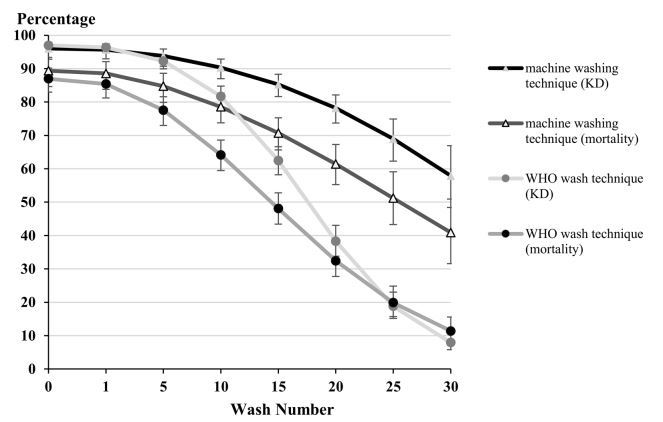Permethrin-dipped clothing kills Zika mosquitoes even after 10 washings
Permethrin-Treated Clothing as Protection against the Dengue Vector, Aedes aegypti: Extent and Duration of Protection
PLoS Negl Trop Dis 9(10): e0004109. doi:10.1371/journal.pntd.0004109
Sarah DeRaedt Banks1, James Orsborne1,2, Salvador A. Gezan3, Harparkash Kaur1, Annelies Wilder-Smith4,5, Steve W. Lindsey6, James G. Logan1,2 james.logan@lshtm.ac.uk
1 Department of Disease Control, London School of Hygiene and Tropical Medicine, London, United Kingdom, 2 arctec, London School of Hygiene and Tropical Medicine, London, United Kingdom, 3 SFRC, University of Florida, Gainesville, Florida, United States of America, 4 Department of Global Health and Epidemiology, Umea University, Umea, Sweden, 5 Lee Kong Chian School of Medicine, Nanyang Technological University, Singapore, 6 School of Biological and Biomedical Sciences, Durham University, Durham, United Kingdom
📄 Download the PDF from VitaminDWiki

Introduction: Dengue transmission by the mosquito vector, Aedes aegypti, occurs indoors and outdoors during the day. Personal protection of individuals, particularly when outside, is challenging. Here we assess the efficacy and durability of different types of insecticide-treated clothing on laboratory-reared Ae. Aegypti.
Methods: Standardised World Health Organisation Pesticide Evaluation Scheme (WHOPES) cone tests and arm-in-cage assays were used to assess knockdown (KD) and mortality of Ae. aegypti tested against factory-treated fabric, home-dipped fabric and microencapsulated fabric. Based on the testing of these three different treatment types, the most protective was selected for further analysis using arm-in cage assays with the effect of washing, ultra-violet light, and ironing investigated using high pressure liquid chromatography.
Results: Efficacy varied between the microencapsulated and factory dipped fabrics in cone testing. Factory-dipped clothing showed the greatest effect on KD (3 min 38.1 %; 1 hour 96.5%) and mortality (97.1%) with no significant difference between this and the factory dipped school uniforms. Factory-dipped clothing was therefore selected for further testing. Factory dipped clothing provided 59% (95% CI = 49.2%- 66.9%) reduction in landing and a 100% reduction in biting in arm-in-cage tests. Washing duration and technique had a significant effect, with insecticidal longevity shown to be greater with machine washing (LW50 = 33.4) compared to simulated hand washing (LW50 = 17.6). Ironing significantly reduced permethrin content after 1 week of simulated use, with a 96.7% decrease after 3 months although UV exposure did not reduce permethrin content within clothing significantly after 3 months simulated use.
Conclusion: Permethrin-treated clothing may be a promising intervention in reducing dengue transmission. However, our findings also suggest that clothing may provide only short-term protection due to the effect of washing and ironing, highlighting the need for improved fabric treatment techniques.
Author Summary
Personal protection technologies could be a key tool in the fight against arthropod borne diseases. Insecticide treated clothing may have a significant effect on reducing mosquito borne disease by reducing biting rates and local vector populations. Currently there are four main treatment techniques; absorption, incorporation, polymer coating, and microencapsulation which are used to treat clothing with permethrin but little is known regarding the efficacy and duration of protection provided by these techniques. The evaluation of these different treatment techniques using standardised World Health Organisation Pesticide Evaluation Scheme (WHOPES) assays and high pressure liquid chromatography (HPLC) analysis provides further information on factors which have a significant effect on the efficacy and duration of protection of treated clothing. This will aid in the design and implementation of control programs using insecticide treated clothing. However, washing technique and heat exposure have a significant effect on efficacy, emphasising the need for further investigation into treatment techniques, so duration of protection can be increased.
